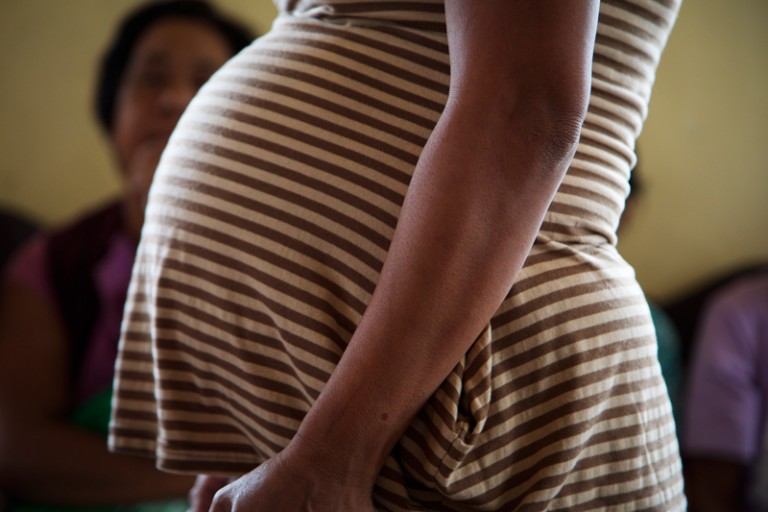Originally posted on scopeblog.stanford.edu by Erin Digitale
Today, prominent medical journal The Lancet publishes “Ending Preventable Stillbirth,” a series of articles calling for global efforts to greatly reduce fetal deaths that occur late in pregnancy or during labor. The series brings much-needed attention to a medical and societal problem that often goes ignored.
“Millions of women and families around the world have suffered the pain of stillbirth in silence,” said series adviser Gary Darmstadt, MD, a Stanford global-health expert who studies how to improve medical care for pregnant women, infants and children in developing countries.
Darmstadt recently answered my questions about why we should break the silence and work to lower stillbirth rates. “Many of the interventions that avert stillbirths also avert deaths of mothers and newborns,” he said. An edited version of his responses is below.
What’s the biggest misconception about stillbirth?
Perhaps the biggest misconception is that stillbirths don’t matter. There is a tradition of social stigma and lack of awareness of stillbirths that makes it easy to keep them out of sight and out of mind. But an estimated 1.2 million women around the world every year have an intrapartum stillbirth: They enter into labor after a normal pregnancy, with great expectations for a healthy baby and one of the most joyous experiences of a lifetime, only to face sudden devastation when the baby dies during birth. Their experiences matter.
A related misconception is that nothing much can be done to prevent stillbirth, or that prevention will divert scarce resources from other important issues. In fact, three fourths of intrapartum stillbirths around the world could be prevented through means that we take for granted in high income societies — such as skilled medical care before and during delivery — and that also benefit mothers, surviving newborns and children.
Why did the scientists involved in The Lancet’s new series think it was important to break the common pattern of silence, stigma and fatalism around stillbirth?
Stillbirth is a taboo topic in many societies, or worse yet, mothers are blamed for failing to deliver a healthy baby and feel intense social pressure to keep quiet about stillbirth. Their sense of loss and isolation may lead to depression, which in turn has many adverse consequences, including for subsequent pregnancies. On the other hand, many women who have the opportunity to talk about their experience with stillbirth and work through their grief express great relief and renewed hope. When the last Lancet stillbirth series came out five years ago, and women shared their experiences online or in parent support groups — often the first time they had ever shared their experience with stillbirth with anyone — many found this to be immensely healing and empowering. Thus, it was both the science showing the adverse effects of unexpressed and unresolved grief, and the testimonials of women who had experienced the benefits of breaking the silence that I believe influenced the scientists involved in The Lancet series to highlight this issue.
You’ve spent years studying how to improve the care of live-born newborns around the world, particularly in developing countries. Why is stillbirth prevention the logical next step?
While we have had some success in reducing newborn deaths, there has been little to no progress in reducing stillbirths around the world. Many risk factors for stillbirth — such as maternal malaria and syphilis infections — are also risk factors for newborn deaths, and stillbirths fall along a continuum with preterm birth, the top cause of newborn deaths. But great gains in reducing stillbirth can be achieved through a well-functioning health system that delivers quality care for mothers, such as skilled care during delivery.
There is a tremendous return on the investments made in stillbirth reduction, sometimes called a triple return because it averts stillbirths, maternal and newborn deaths. In fact, the return is greater than that, as these interventions also improve child neurodevelopmental outcomes, maternal morbidities and long-term adult well-being.
The recent launch of the United Nations’ Sustainable Development Goals dovetails perfectly with stillbirth prevention. These UN goals aim to address inequality in all its dimensions, and call for the needs of those most left behind to be addressed first. Given that stillbirth is one of the most neglected issues in global health, greater funding and policy, program and research action to avert stillbirths is critical to achieving this vision.
What is the most important first step for reducing preventable stillbirths?
Awareness of the issue is a critical first step. Stillbirths are not tracked in global data and by-and-large remain off the global health agenda, lacking investment, programmatic action and research. The Lancet’s new series outlines five actions needed to change this: intentional leadership; increased voice, especially of women; implementation of integrated interventions with commensurate investment; use of indicators to measure effects of these actions, and especially to monitor progress in the total burden; and investigation into crucial knowledge gaps.
Who do you hope will pay attention to The Lancet‘s series?
The Lancet has wide reach to individuals in medical and global health fields, including funders. I hope it will also reach policy makers and inspire them to make policy change and commitments of funding. In recent years, parent groups have raised their voices on the issue of preterm birth and have helped to shift global attention to this issue. It is my hope that this new series of articles will capture the minds and the hearts of parents, health professionals, policy makers, and funders, stirring them to new action and determination to end preventable stillbirths.
